
John Pawson designed his private country home in the Cotswolds as a minimalist retreat, using Dinesen elm to resonate with the history of the place. Home Farm was originally built in 1610 as a farmhouse with a farm cottage, a barn and stables set in an apple orchard with a small pond. Pawson converted the buildings and rebuilt everything in his own design. At Home Farm, which was completed in 2019, Pawson was his own client, free to realise his architectural visions.
Private residence – the Cotswolds, England
Architect: John Pawson
Photographer: Claus Troelsgaard
_______________
Elm (Please note that this is a bespoke project, and Elmwood is not part of Dinesen's current product range. You can explore our products here)
Thickness: 30 mm. / US 1.18"
Width: Curated Widths 125–200 mm. / US 4.92" – 7.87"
Length: 1–3 m. / US 3' 34" – 9' 10"
Finish: unknown
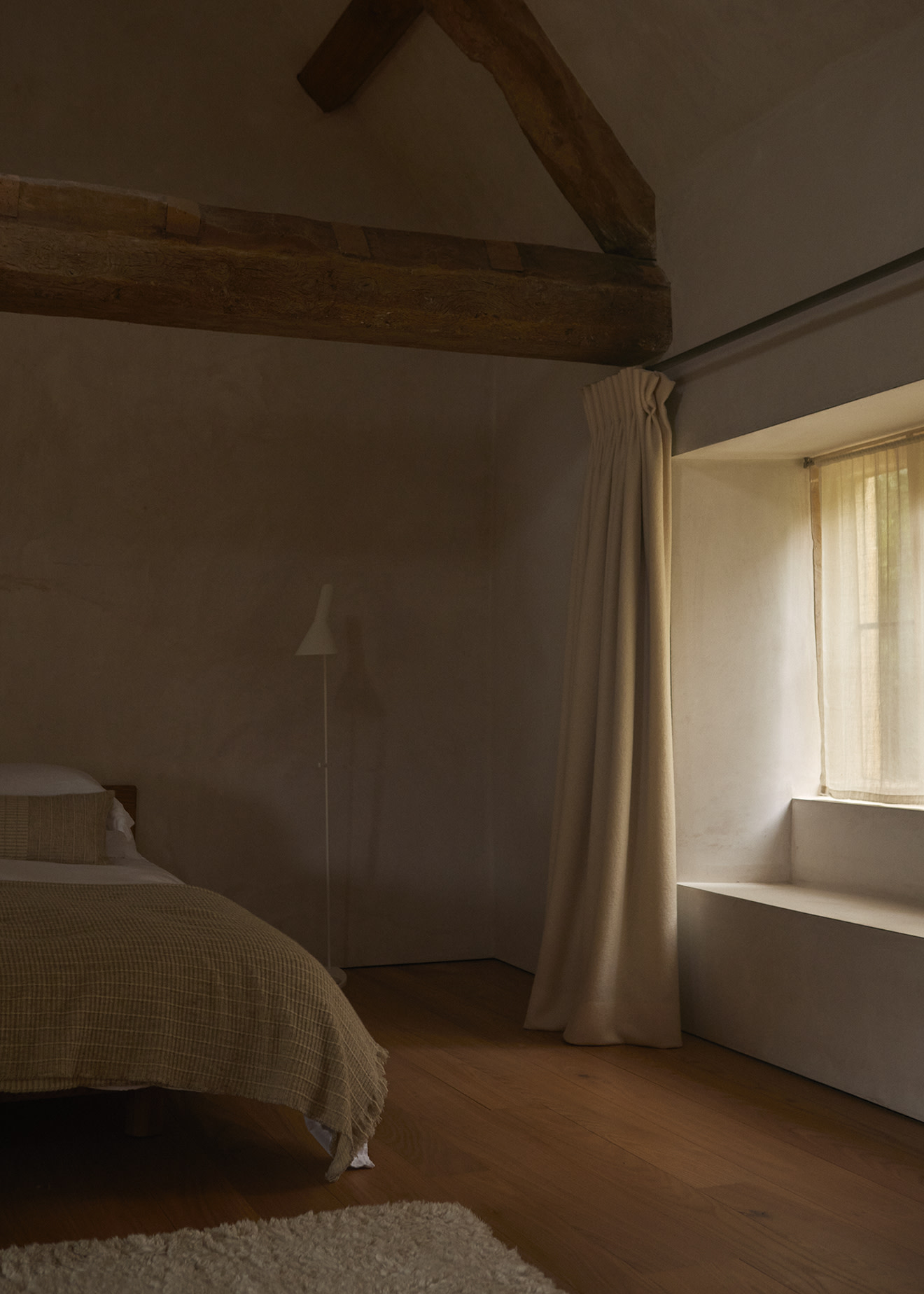
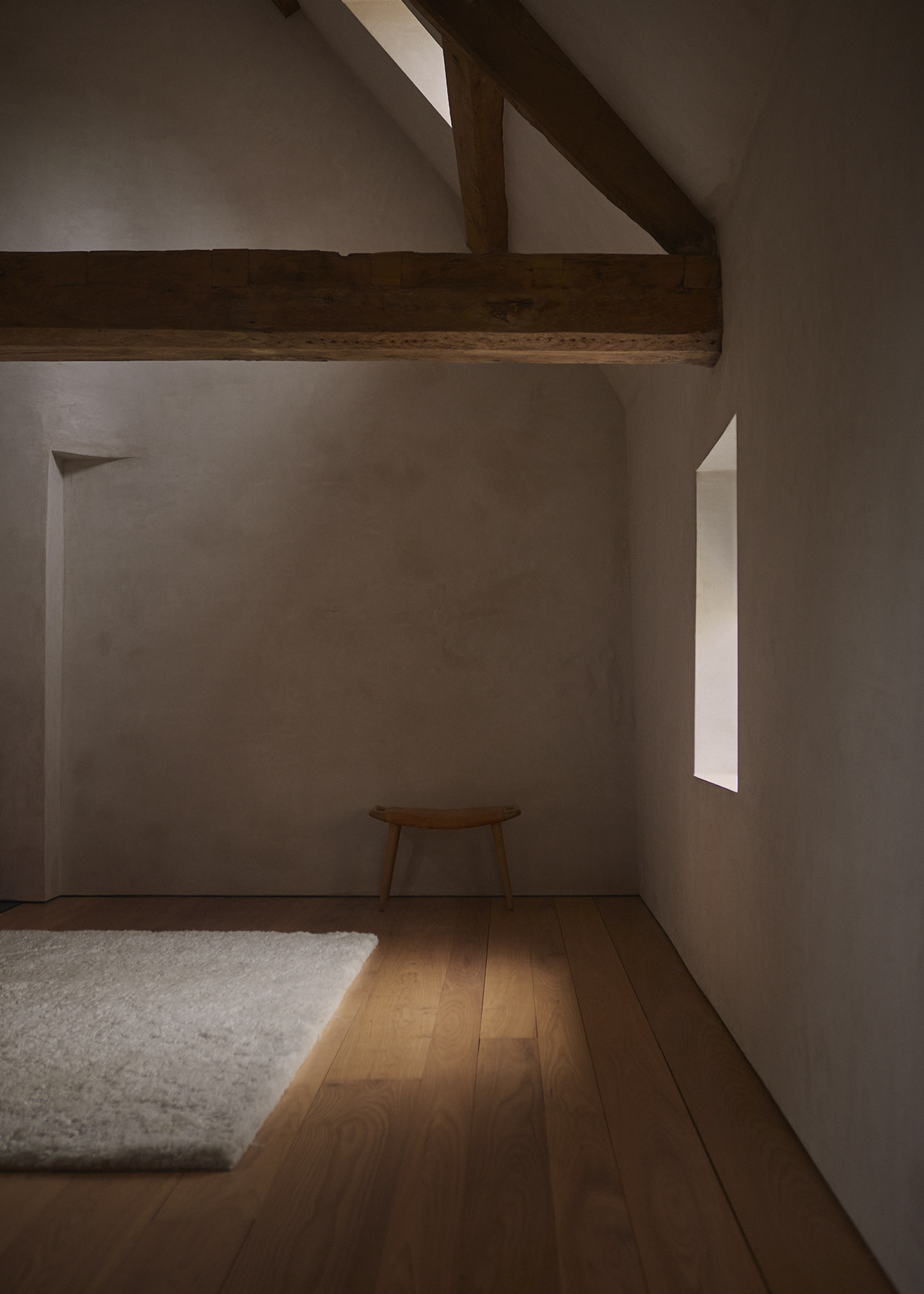
Today, Home Farm is the British architectural designer John Pawson’s second home, every inch of it Pawson’s own design. The existing buildings were tied together into a more than 45-metre-long home made of original Cotswold stones, supplemented with modern materials for the new additions. The new elements, made of layered concrete in the same colour shades as the original stones, connect the former barn and the farmhouse.

The original property was built in the 17th century, when elm was the material of choice, and Pawson was determined to honour this rural English building custom. However, so few big, strong elms remained in England, and Pawson had to look elsewhere. Dinesen did not hesitate when they received the unusual request. By then, Dinesen and Pawson already had a personal and a professional relationship dating back two decades, with many joint projects in their back catalogues – but none of these projects had featured elm. This was clearly a unique project.
Dinesen elm is used throughout Home Farm. New elmwood floors now merge with the original elm floors, laid in Curated Widths, which have planks varying from 125 to 200 mm in width. The place has no fewer than three built-in kitchens, all in elm, which was also used for many of the walls, doors, stairs, cabinets and bathroom elements. The use of planks in mixed widths applies to all design solutions in Dinesen elm.
The new design elements are made of approximately 24-metre-tall trees felled in the Black Forest – the last of their kind that Dinesen was able to source.

Dinesen Elm, Curated Widths
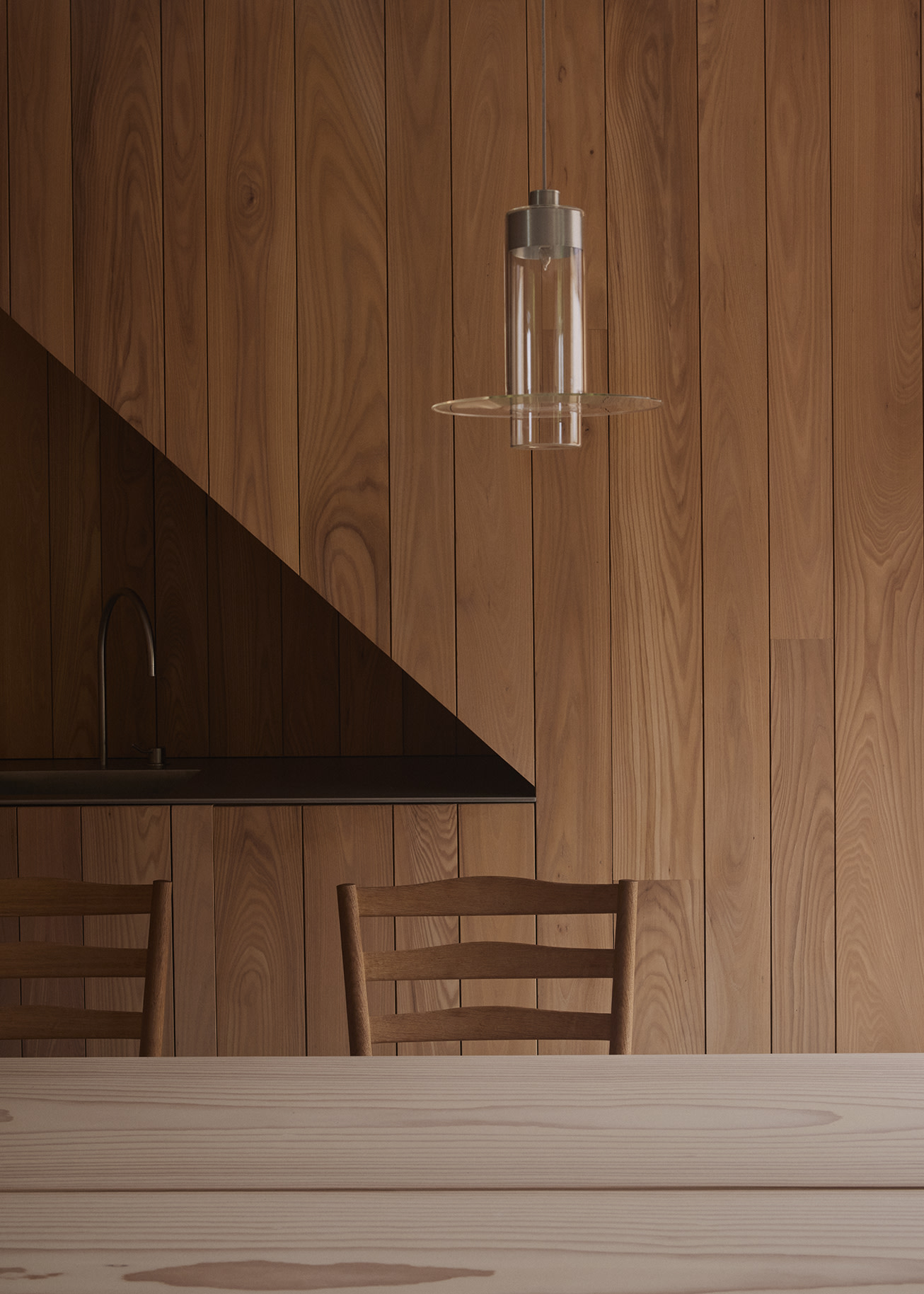
Pawson Furniture Collection, Dining table
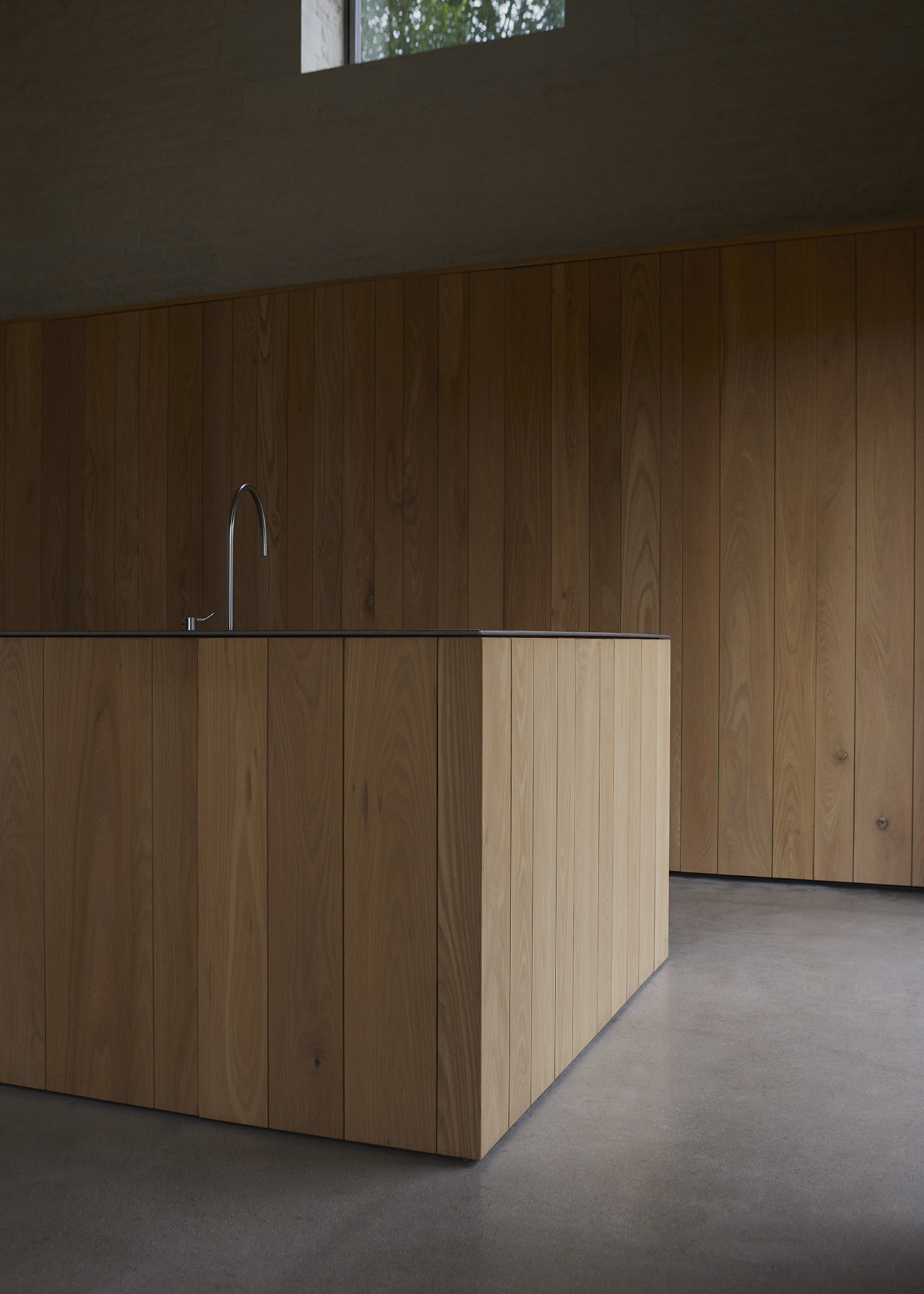
The remaining floors were cast in concrete with chips, like a sort of unbusy terrazzo. Instead of paint, walls and ceilings are coated with breathable lime plaster, which lends the interior a pale, minimalist expression. Shelves, countertops and bathroom counters are made of white Lasa marble, which subtly blends with the elm elements.

The last component of the Home Farm design is the separate guesthouse, which stands across from the main building and is similarly clad in Dinesen elm. The guesthouse has a living room, a kitchen and a dining area with a wood-burning stove, while the top floor features a bathroom and bedroom under a cathedral ceiling with beautiful, exposed beams framing the space.
In many regards, Home Farm is a manifestation of John Pawson’s architectural style – a work of architecture that awakens the senses with the materials, proportions and qualities of light providing the primary experience.
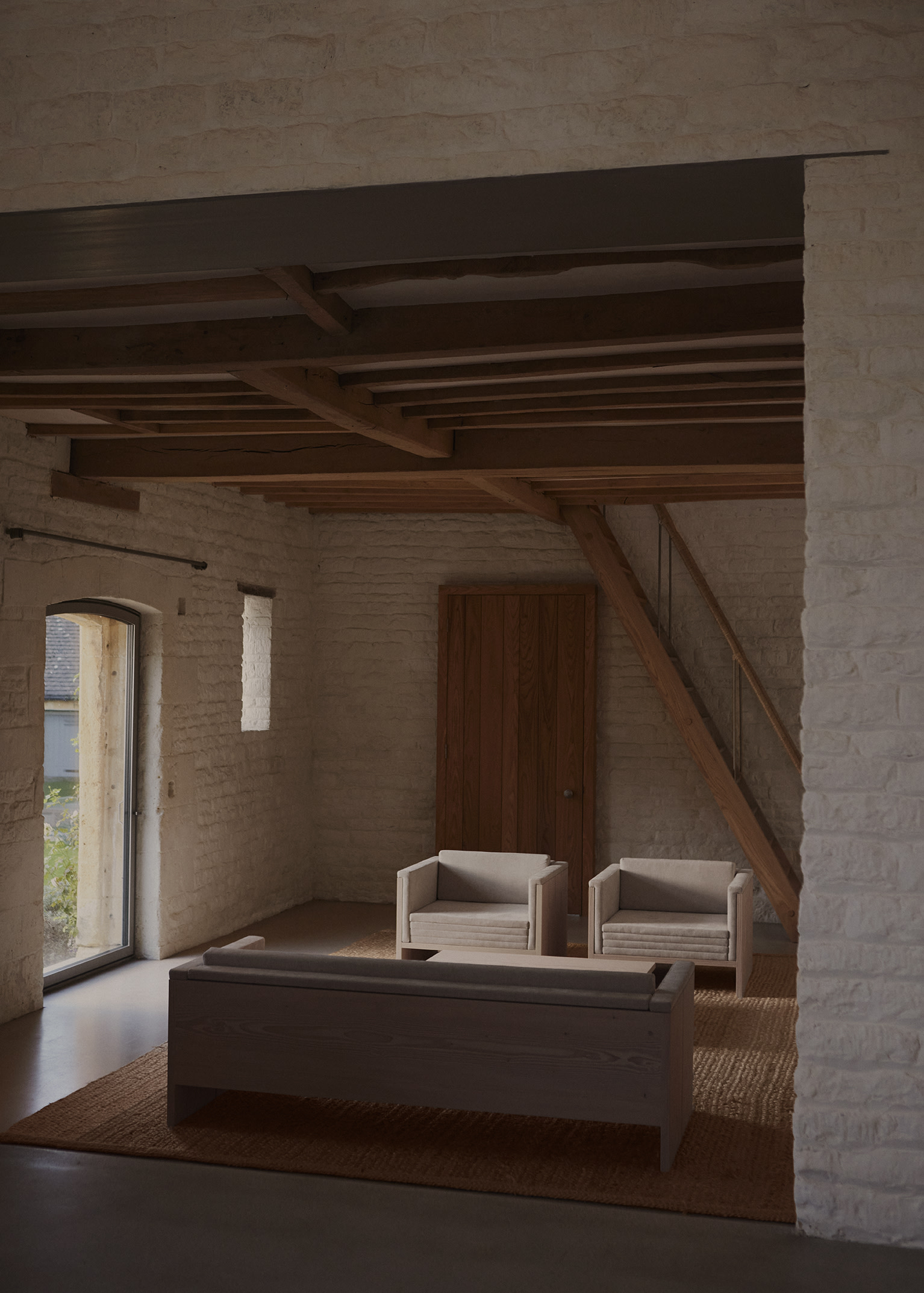
Pawson Furniture Collection, Lounge series
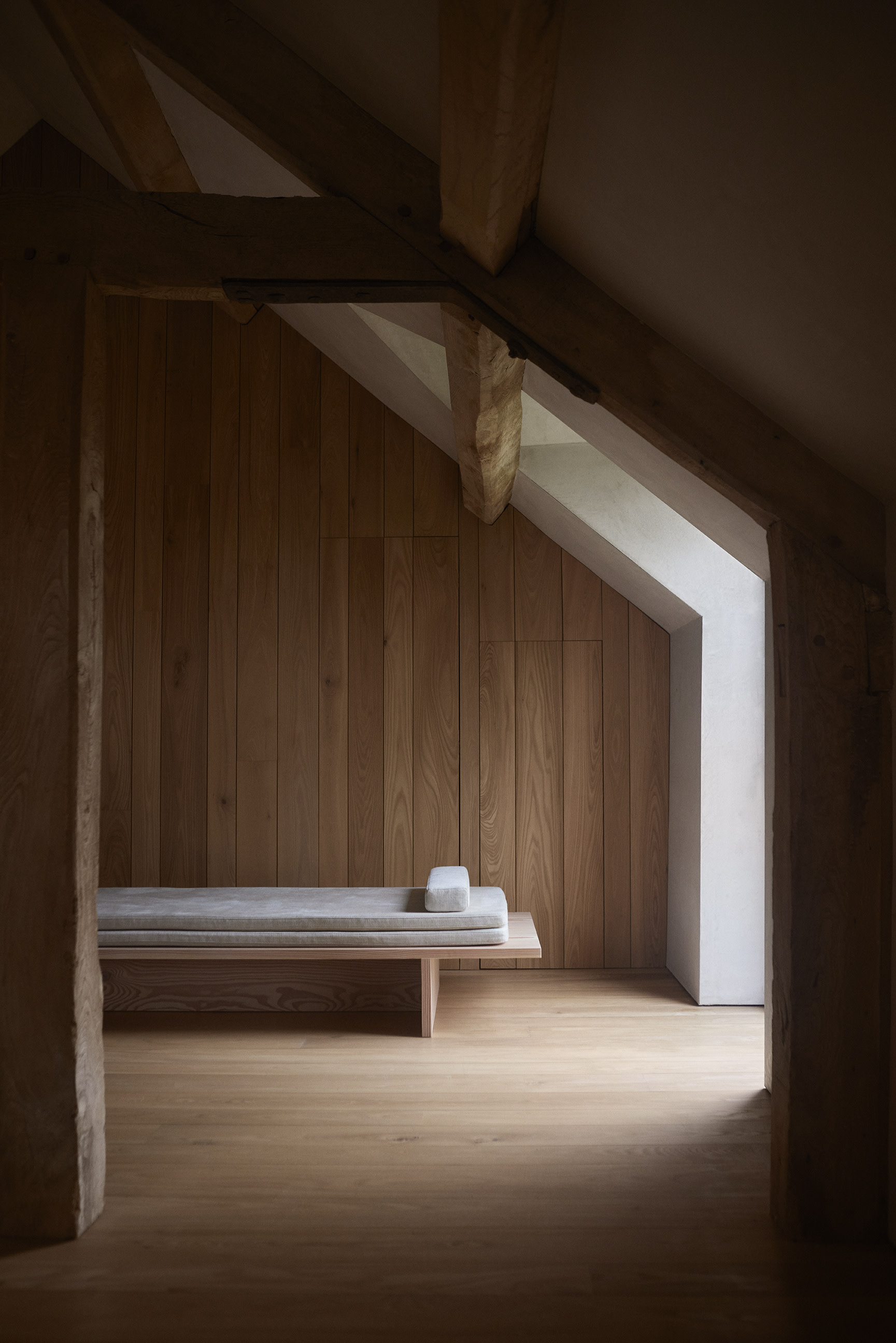
Pawson Furniture Collection, Daybed


